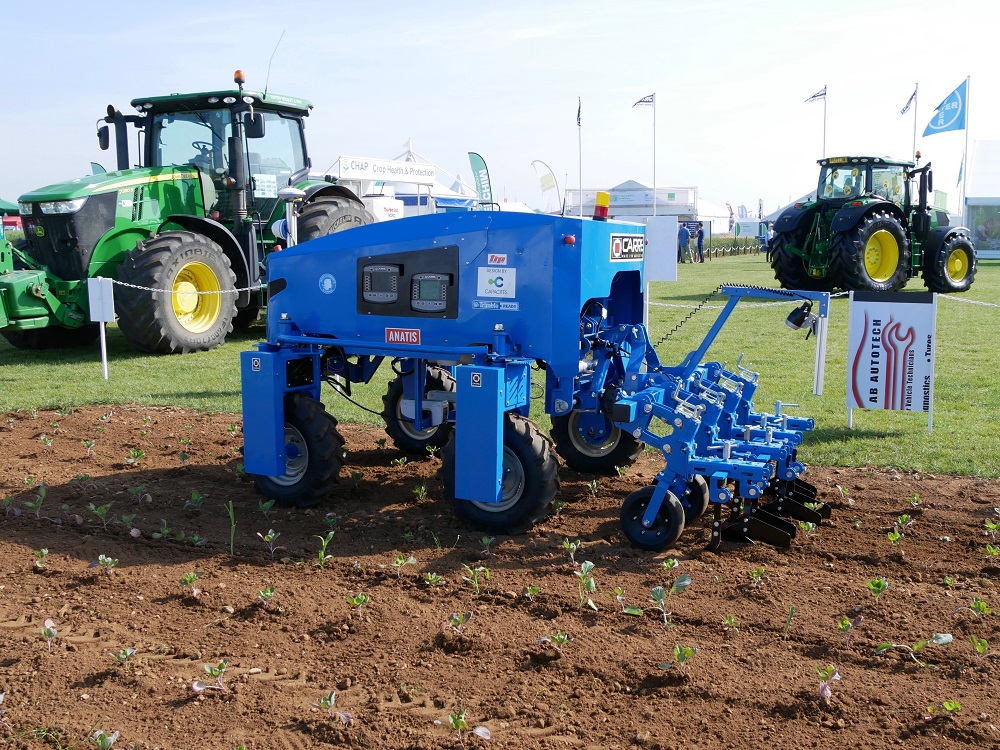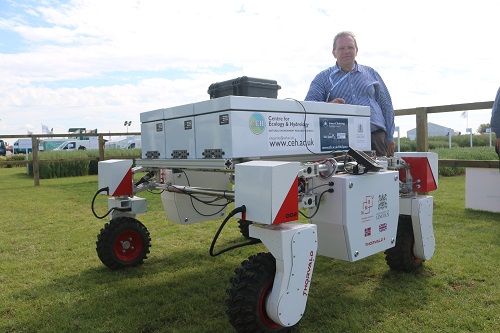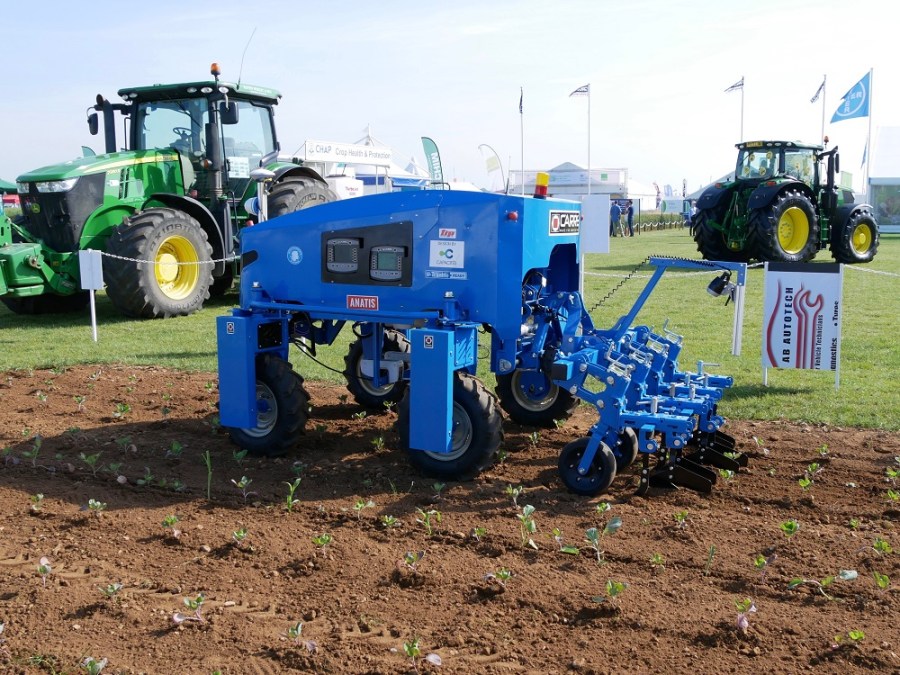
Innovation and automation were the draws at this year’s Cereals event. CPM was there.
By Jane Brooks
Growers were out in force to see some of the latest technology being demonstrated alongside more tried-and-tested arable solutions. The sprayer zone proved to be one of the busiest parts of the show, with the cultivation equipment coming a close second. However, it was in the realms of the robots that visitor interest was really ignited.
The field of the future display gave a fascinating insight into some of the research being carried out by both universities and businesses. An example of which was in the form of the Thorvald agricultural robot displayed on the AHDB stand. Developed with scientists from the Norwegian University of Life Sciences this is the latest piece of technology added to the facilities of the Lincoln Institute for Agri-food Technology (LIAT). It’ll support field trials carried out at the University of Lincoln’s Riseholme Campus.

Prof Simon Pearson of Lincoln University with the Thorvald agricultural robot that was developed with scientists from the Norwegian University of Life Sciences.
It’s built to perform various tasks, including use as a multi-purpose lightweight robotic carrying platform, a crop and soil sensor platform and, potentially, a platform to manage crops and for precision weed control. Able to operate on uneven terrain it’s agile enough to navigate between rows of crops without touching plants.
In many parts of the industry automation has already arrived. One robot that could soon be working in the UK is the Anatis Machine, being shown by Carré. Charles Adenot, sales and marketing manager for Carré explains that the fully programmable autonomous GPS-guided machine is driven by an electric motor, powered by a 12v battery, which gives a four-hour charge. Currently the working width is up to 1.2m and it mechanically weeds and gathers information on weed populations, crop and soil health.
The Anatis works independently by hoeing between and within rows, it’s also fitted with a laser and camera so monitors crops by acquisition and processing of key indicators such as number and types of weeds, crop density, light levels, soil-moisture content, air temperature and soil temperature. It uses Trimble GPS and was also testing Trimble’s WeedSeeker spot herbicide sprayer.
Data can be downloaded to a PC, smartphone or tablet. Powered by quiet-running electric motors, the laser, camera and GPS-guided prototype Anatis was in action on the Fields of the Future display.
Laying down tracks
Northants-based Lynx Engineering was exhibiting the new NexTGear high-speed track system from the Dutch manufacturer Zuidberg. “At the heart of Zuidberg’s design is an integrated patented transmission, which keeps the tractor’s mechanical front wheel, rear wheel ratio intact with the result that the tractor suffers no speed reduction and its four-wheel drive remains available at all times,” explained Lynx Managing Director, Nick Ewbank.
Zuidberg’s high-speed track system also features a new suspension arrangement. In common with other systems, the bogie wheels are suspended, but additionally the entire track system including the idler wheels are also suspended. This is achieved by fitting a fixed mounting-frame to the tractor’s rear axle, complete with pivot points and a hydraulic cylinder with an accumulator.
The suspension has a stroke of 80mm. In addition, the bogie wheels can independently rotate sideways in order to follow the contour of the road. This new suspension concept, says the manufacturer, not only enhances driver comfort, but also extends the lifetime of both the tractor and the track system.
Bridgestone has offered a range of agricultural tyres since 2014, and their latest innovation, the VT-Combine tyre was one of the products on display. Designed for cyclic field operations (CFO) and featuring improved flexion technology, the tyre offers 20% more load compared with standard tyres.
Designed with a six-tread ply construction the tyre doesn’t need a steel belt, which Bridgestone says ensures excellent impact absorption, good puncture resistance and easy repair.
The tyre allows a maximum speed of 15km/h for CFO, as opposed to the 10km/h maximum with conventional tyres. Its large footprint ensures maximum soil protection, adds the manufacturer.
- There’ll be a full report from Cereals 2017 in the July issue.




